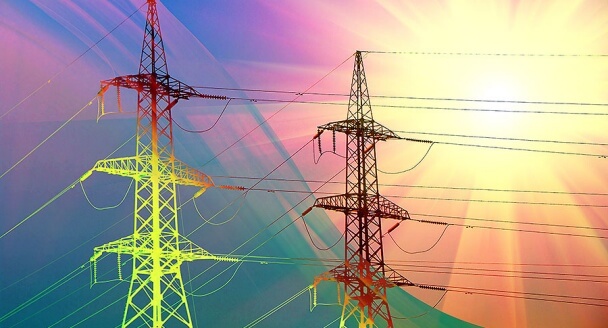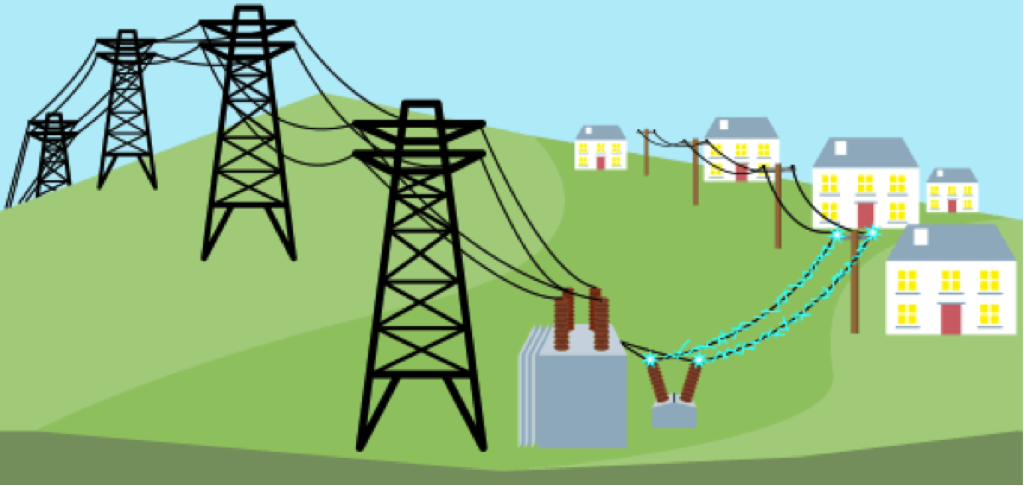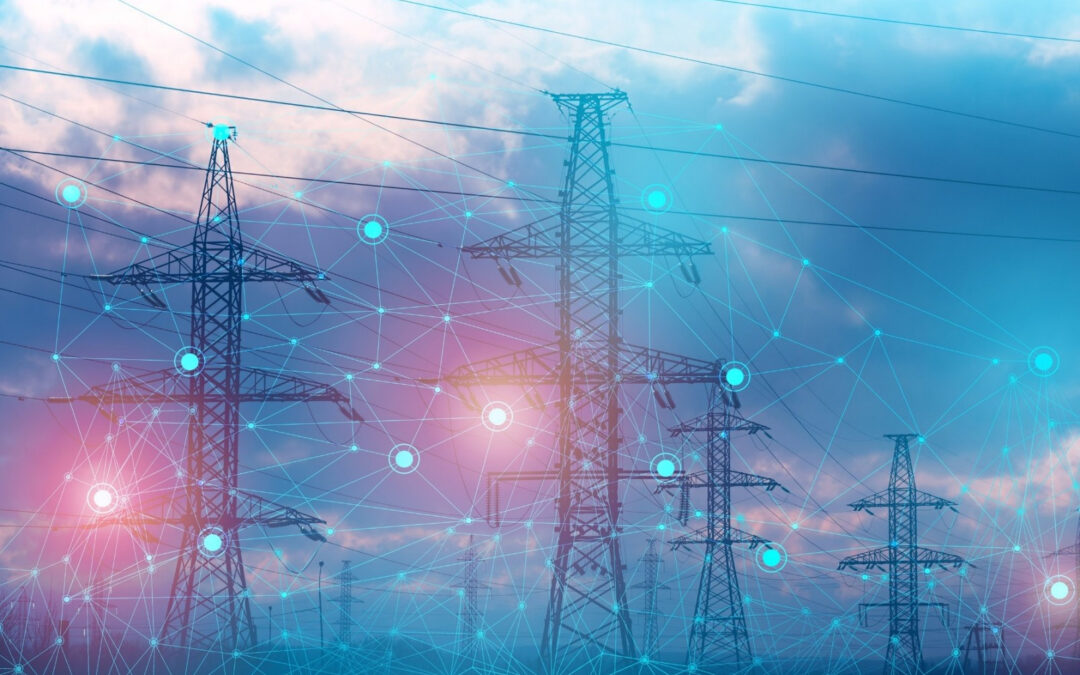- An Electrical power grid is an interconnected network for electricity transfer from power plants to end users.
- Renewable energy can hep achieve power grid modernization.
- Replace the outdated power grid, achieve the safe operation and stability of power line network is the purpose of power grid modernization.
An power energy grid is an interconnected network for electricity transfer from power plants to end users(customers). It can also refer to the transmission and distribution systems for electricity. The power grid comprises of the generating plant, the transmission lines, substation, transformers, distribution lines and the consumers. The electric grid transmits energy from different sources of energy such as wind, solar as well as thermal power.
In order to achieve the stability and resilience of power grid, it is necessary to modernize the electrical power gird. The renewable energy reduces the impacts of climate change and boost grid modernization.
A drop-out fuse is an electrical safety device used on utility poles to protect electrical equipment and systems from damage during overloading or short-circuits. These fuses are designed to “drop out” or disconnect the circuit if an excessive current flows through the system, effectively breaking the circuit and preventing further damage. The drop-out fuse typically consists of a metal or ceramic casing, a fuse element inside the casing, and a mechanism that allows the fuse to disconnect from the circuit when the current reaches a specified level. This mechanism can be a spring-loaded arm, a melted fuse link, or some other type of release mechanism. The drop-out fuse is an important component in the overall electrical safety system, helping to ensure that electrical equipment and systems are protected from damage and dangerous electrical conditions.
Impacts of climate to the outdated electric grid

The current electricity generation results in more than 32% of carbon dioxide emissions into the atmosphere. This is as a result of using burnt fossil fuels like oil, coal and natural gas. Modernizing the grid will help to reduce the release of greenhouse gas emissions into the atmosphere. Spool insulator can be made from glass, porcelain or polymer which makes it easy for them to adapt to the different weather conditions into the environment. The major impacts of climate to the outdated energy grid are as follows:
Blackouts
The extreme weather conditions such as storms can tear down power lines, intense cold or heat can cause power grids to malfunction and flooding can overwhelm power plants. The climate change has caused extreme weather conditions that has left the outdated energy grid to be vulnerable.
Efficiency
The extreme weather conditions has left the stress on the power lines to cause inefficiency of energy production. The reduced inefficiency may not lead to outages but it can make energy sources far more unreliable than they have been previously.
Economy
Other than causing outages and inefficiency, they also cost a lot of money if it is not strengthened. This may also include the repair and maintenance costs of the broken grids. Spool insulators are especially used to protect the conductors and the semiconductors from the excess voltage that may be caused by lightning or surge in current.
Climate injustice
The strain of the pandemic and economic chaos made it difficult for families to save for emergencies. The economy has also been shaken by the current weather conditions. This makes it hard for electricity to be distributed from one place to another.
Challenges of the power grid
Electricity is a basic necessity of our daily lives which is used in our homes, businesses and schools. The electric grid stabilizes the production and consumption of the electricity. Overhead line connector is made from hot dip galvanized steel which helps them to resist rust and corrosion. The grid is used to transmit the energy from one point to another but it is faced with a lot of challenges which are as discussed below.
Renewable energy sources
The future has been said to be fueled by the renewable energy. The integration of the renewable sources of energy and the grid may not be as easy as it is dependent on the weather conditions. The use of the renewable energy sources without the advanced technologies may cause a great imbalance to the electric grid.
Transmission losses
The high temperatures in the power lines cause significant energy losses in the form of heat. These losses are paid for by the everyday consumer. This may be resolved by shifting from electricity production in a few big power plants to a system of small local energy sources. This ensures that the energy is consumed as close as possible to the source.
Power outages
Blackouts are mainly caused by the extreme weather conditions and worn out power lines. A blackout can result in in electronic device damage and important data loss. Storage batteries may be used as backup power where it stores energy when the demand is low and production is high, to use when the demand is high and low production.
Electromobility
The use of electric vehicles uses a supercharger which consumes huge amount of energy. This can be resolved by use of smart grids which use solar panels, batteries, electric vehicles chargers and other equipment. Overhead line connector is used to reduce the loose connections on the overhead transmission lines.
Grid modernization
This is where the grid increases the capacity by energy decentralization. This local energy production and consumption lowers the amount of electricity distributed through the power grid.
Threat of cyber-attacks
The use of potential databases to eliminate cyber-attacks proved to be efficient. The distributed databases mean that an attack on one point of the grid cannot affect the operation of the entire system. Overhead line connector has a high mechanical and tensile strength that allows them to be adaptable to all weather conditions such as high temperatures, strong winds and ice loads.
Modernizing the grid
Grid modernization will lead to the ability of the grid to accommodate energy from all sources of energy including the new sources of energy. This will use the new architectural concepts, tools and technologies. These will help to measure, analyze, predict, protect and control the grid of the future. Ground anchor are made from stainless steel and galvanized steel which protects them from rust and corrosion caused by the available moisture in the soil. The new grid must have the following;
- It must have superior resilience to hazards of all types.
- Have enhanced reliability for daily operations.
- Must have improved security from an increasing and evolving number of threats.
- It must be affordable to maintain our economic prosperity.
- It must be flexible to respond to the erraticism and uncertainty of conditions.
- It must have increased sustainability through energy efficient and renewable resources.
Renewable energy reduces the impacts of climate

Fossil fuel is the greatest contributor of energy and the greenhouse gas emissions. It is also fueling extreme heat, droughts, wildfires and hurricanes which in turn is overtaxed to the American outdated energy grid. Spool insulators are also important to protect the other devices used on the transmission lines from the faulty currents. Renewable energies can be used with the developed storage systems to enhance efficiency and reliability. It also boosts the grids resilience and reduce the use of fossil fuels. The main source of renewable energy for the grid is the solar power which is used with the storage batteries. This helps the grid to respond to the extreme weather. The use of the storage batteries could potentially win the fight against the extreme weather conditions.
Benefits of grid modernization
Grid modernization ensures that the grid takes full use of the technologies that are used daily in our lives. Modernization will also help meet the supply demands, address outages at the source and communicate effectively with consumers regarding their use. Earth anchors are mostly used to prevent alteration of a retentive wall after excavation. The grid modernization will increase its reliability, resiliency, security and affordability. It will also help to develop Microgrids for places like schools and hospitals. The following are more benefits of the grid modernization:
- Lower energy costs
- Increase distribution of energy usage information
- Reduce power outages
- Speed up response times to outages
- Strengthen cyber security
- Increased integration of renewables
Challenges of grid modernization
Modernizing the outdated grid will not be an easy task as it is faced with a lot of challenges in the industry. Earth anchors are also used in drainage systems for restraining capabilities. The following are the major issues standing between the current outdated grid and the modern electric grid.
Use of big data
The significant increase in data collection can be used to analyze delivery systems and energy usage. It can also be used to identify unproductive conditions, theft of service or unusual losses. The challenge arises when turning this information into actual savings.
Electrification of transportation
Replacing energy from fossil fuels with electric energy is an improvement strategy that is challenged by the increased electric vehicles charging infrastructure, battery charge times and EV adoption.
Renewable power
The increased generation of energy from renewable sources is an opportunity for growth but it is challenged due to the cost and storage capacity.
Defense
New smart and controlled devices present security challenges but they may help reduce risk.
FAQs
Why we need to modernize the power grid?
Achieving the stability and resilience of power grid
How can we use to modernize the power grid?
Use renewable energy
What is the application of drop-out fuse cutout?
Drop-out fuses are commonly used in a variety of electrical systems and applications, such as power distribution systems, residential electrical systems, motors and other electrical equipment, and others.


